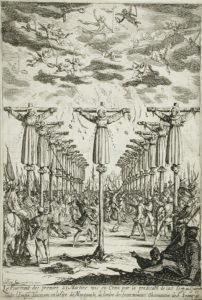It was March of 1585. After three exhausting years spent travelling halfway around the world, Julian and his friends, all Japanese converts to the Catholic Faith, looked out on Rome. They were the first Japanese to gaze on the Eternal City, which seemed like something out of a dream. As they arrived, a large crowd gathered to welcome them in the evening twilight. Julian and his fellow Japanese nobles were escorted by the cavalry of the Pontifical Army. Trumpets blasted and torches blazed before them. Entering the Jesuit Church, a solemn Te Deum resounded in thanksgiving for their arrival.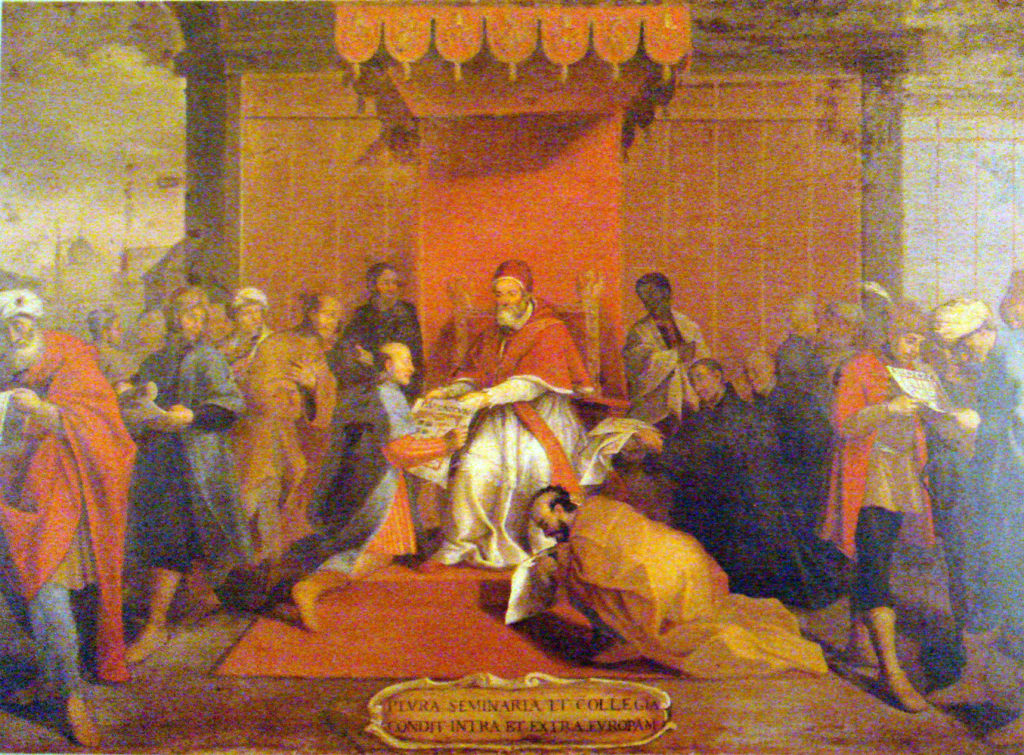
Julian eagerly awaited meeting the Holy Father the next day, so much so that he could hardly sleep. In the morning, he and his entourage were met by the ambassadors of the Catholic powers of Europe. The Papal Guards led the grand procession through the streets. Approaching Castel Sant’Angelo, the cannons fired in salute. Entering the Vatican Palace, Julian and his fellow Japanese prostrated themselves before the Holy Father’s throne.
Pope Gregory XIII rose, bedecked in papal tiara and flowing robes of state. With tears in his eyes, the aging pope raised Julian from the floor and embraced him. He did the same for the others in the entourage, the first of the Holy Father’s Japanese children to have the honor.
Julian at long last solemnly presented the letters of the Catholic princes whom he represented. Through an interpreter, he declared: “Your Holiness, we come in our own names and in the names of our princes to acknowledge you as the Vicar of the Son of God on earth, and to pay you the homage of the Christians of Japan.”
Seeking Peter’s Blessing
Julian Nacaura, Mancio Isto, Martin Fara and Michael Cingina had left their homes in Japan in the spring of 1582. Though their mission took three years of travelling to fulfill, here they were, standing before the Vicar of Christ. After a visit to St. Peter’s Basilica, the Holy Father conversed with them at length on the needs of the Church in Japan.
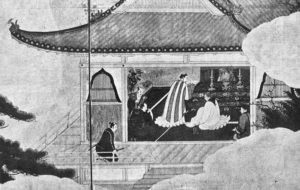
Pope Gregory was gladdened at hearing reports from these serious young men and zealous Catholics. With over 300,000 in the ranks of the baptized, growing seminaries and many converts of influence, the Church in Japan was the largest in Asia. Pope Gregory listened intently as they related their hopes for Japan’s conversion.
Remaining in Rome for some time, the Japanese visited many places of pilgrimage, including the catacombs and tombs of the holy martyrs. The four young Japanese knelt before the shrines of their forerunners in the faith. Little did they know that Julian Nacaura would one day join the ranks of the martyrs.
Three weeks later, Pope Gregory XIII passed away. His successor was Pope Sixtus V. The new pope immediately called an audience with the Japanese entourage. He imparted the apostolic benediction and gave them places of honor at the awe-inspiring Papal Coronation. A few days later, Pope Sixtus made the four young men the first Japanese Papal Knights. They knelt before the Holy Father and swore to defend the Faith with their lives. After assisting at a Solemn Mass and receiving the Sacred Host from the hands of Pope Sixtus, the four young men departed to bear the Apostolic Blessing to the Catholics of their country.
Their journey from Japan to Rome had taken three years and two months. The return journey would take even longer. Having left Nagasaki in 1582, they did not see Japan again until 1590. Their return marked the start of brutal persecution.
Brutal Persecution and Martyrdom
Saint Francis Xavier arrived in Japan in 1549. The Jesuit mission in the country soon flourished. Every kingdom on the islands had large groups of Christians. Trouble began in 1580 as Catholics grew in number. Dutch merchants began spreading lies, insisting the Catholic Jesuits were the means for subjecting Japan to European rule.
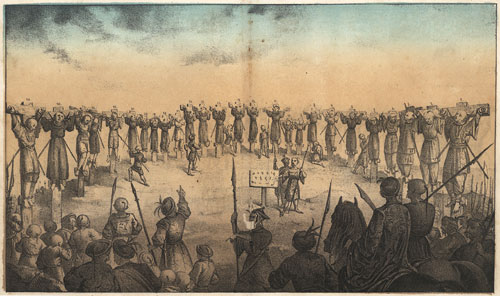 The Japanese prince, Taicosama, who came to power by defeating other princes in battle, began to pressure Catholic nobles to abandon their Faith. In 1587, he issued an edict of banishment against foreign Jesuits, Franciscans and Dominicans, forcing most into exile. Twenty-six of their residences and more than 140 churches were destroyed.
The Japanese prince, Taicosama, who came to power by defeating other princes in battle, began to pressure Catholic nobles to abandon their Faith. In 1587, he issued an edict of banishment against foreign Jesuits, Franciscans and Dominicans, forcing most into exile. Twenty-six of their residences and more than 140 churches were destroyed.
In 1590, the news of the arrival of the four young nobles from their embassy to the Vatican soon spread. Advisors close to Taicosama lied to him, saying that they had gone to Europe to hand over Japan’s sovereignty to foreigners of the West.
At Taicosama’s orders, soldiers soon arrested all of the clergy in the kingdoms of Osaka and Miyako (modern-day Kyoto). Taicosama next issued an order outlawing the Christian religion. He ordered that six European Franciscan missionaries, three Japanese Jesuits and fifteen Japanese laymen including three young boys be executed by crucifixion in Nagasaki. They were transported more than 500 miles and exposed to the insults of the people as they passed. Onlookers were astonished to see looks of profound joy on their faces, knowing they would shed their blood for Jesus Christ.
The three youngest prisoners, Thomas age 14, Anthony age 13, and Louis age 11, tied together in the same cart, began singing the Pater Noster and the Ave Maria when they passed through the cities. The multitudes were filled with admiration.
Two young Japanese Catholics, Peter Sekugiro and Francis Fahalente, followed the condemned religious the entire way. The guards tried in vain to make them leave. Peter and Francis were thus also condemned, bringing the total to 26.
On February 5, 1597, they were led to a hill overlooking Nagasaki where crosses had been prepared for them. They all began to weep tears of joy. Each embraced his cross and kissed it. They were tied to the crosses with coarse cords and lifted up. Father Peter Baptist intoned the canticle Benedictus, which the others joined in. One by one they were pierced through with two lances which, thrust into their sides, crossed each other at the breast and came out through the shoulders. Eyewitnesses said that a heavenly light surrounded their bodies. Faithful Catholics soon approached and gathered the blood of the martyrs.
The Blood of Martyrs: Seed of the Church
Word spread quickly of this first martyrdom. Thousands of Japanese soon flocked for instruction in the faith, edified by the heroic example of the martyrs. Miracles worked through the prayers of the martyrs became numerous.
Japanese Catholics began to invoke the new martyrs for the grace to suffer and die for Jesus Christ. Our Lord granted their splendid petition in short order. In honor of Our Lady, communities were formed with the particular intention of praying for the fortitude necessary to die for Christ.
[like url=https://www.facebook.com/ReturnToOrder.org]
The death of Taicosama in 1598 brought no relief to the Catholics of Japan. Daifusama soon replaced him, the first ruler of the Tokugawa Shogunate. This dynasty ruled Japan throughout the 17th century, multiplying the attacks on the Catholic faithful.
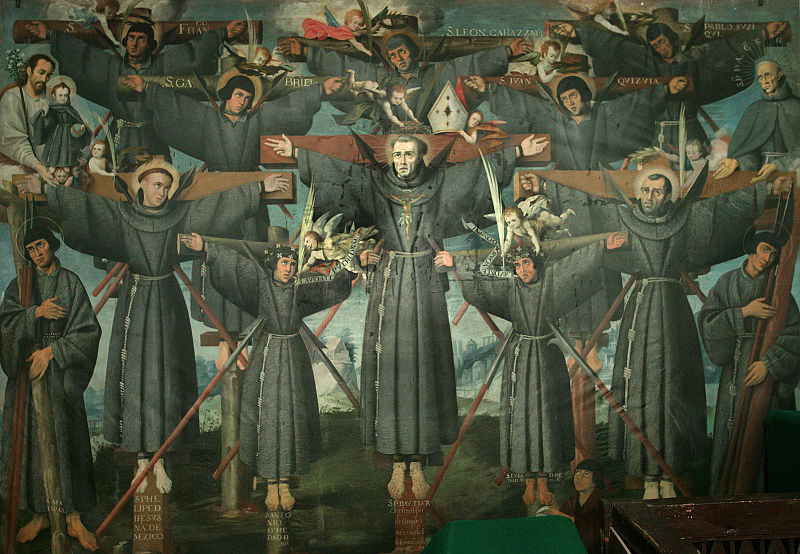 Intense pressures were put in place for Catholics to renounce their faith. Officials rounded up the faithful and forced them to step on crucifixes or holy objects as a sign of their repudiation of the Faith. The weak among them relented, but large numbers of the devout refused, marking themselves for death.
Intense pressures were put in place for Catholics to renounce their faith. Officials rounded up the faithful and forced them to step on crucifixes or holy objects as a sign of their repudiation of the Faith. The weak among them relented, but large numbers of the devout refused, marking themselves for death.
When the clergy were expelled, a poor blind man named Damian began to teach catechism and baptize, encouraging his fellow Christians. The local prince offered him great gifts if he would give up his faith, and threatened him with death if he refused. He quickly replied: “You give me the choice of life and death. It is death I choose, and I prefer it to all the goods you promise me.” He was led out to a place of execution, and his executioner told him he could still be saved should he deny his faith. Damian answered: “I am a Christian. Do your work.” He was then beheaded.
Nobility of Japan Martyred
Near Arima, there were eight noble families condemned to die for refusing to renounce their faith. Twenty thousand Christians soon appeared to accompany them to their deaths. They formed columns singing the Litany of the Blessed Virgin as they approached the place of execution.
The youngest, James, was asked if he would like to be carried as he became tired from walking. He replied: “We are imitating our Captain who ascended Calvary on foot. Now we must labor; eternity will give us a long rest.” When others wept at seeing him condemned, he chastised them: “Why do you weep? Do you not envy my happiness? Walk merrily, as you see me doing.”
Approaching the place of execution, the condemned kissed the stakes they would be tied to and burned. Leo Caniemon spoke boldly to the crowds of Christians there:
“My brethren, the Christian religion is the only one in which we can be saved. Persevere in the faith. Let not our torments frighten you. The sufferings are light and short. The reward is great and is eternal. Be you the witnesses that we die for faith in Jesus Christ.”
The fire beneath them was lit, and all the Christian onlookers fell on their knees. The remains of the martyrs were taken to Nagasaki and buried beside a church.
The following year, any samurai who refused to renounce Christianity was stripped of his title and banished. A famed samurai named Justo Takayama faced exile for his refusal to abandon his faith. He and 300 Japanese Catholics set sail from Nagasaki, never to return.
Throughout the decade of 1620, new persecutions arose, and larger numbers of Catholics were executed. On just one day in 1622, twenty-five religious were burned to death after witnessing the beheading of thirty Japanese faithful.
A Fate Worse than Death: Torture
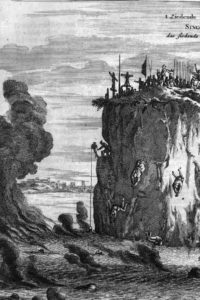 A new edict came from the emperor: the Christians should no longer be put to death, but tortured until they renounce their faith. At Mount Ungen near Nagasaki, hundreds of Christians were tortured with flames, lashings, boiling water poured over their heads, and all manner of cruelties. Many of those tortured died from their wounds. Father Anthony Iscida, a Japanese Jesuit priest, spent three years in prison, after which he was taken to Mount Ungen. All his limbs were dislocated and sulfuric waters were poured over him for thirty days. He was finally burned alive.
A new edict came from the emperor: the Christians should no longer be put to death, but tortured until they renounce their faith. At Mount Ungen near Nagasaki, hundreds of Christians were tortured with flames, lashings, boiling water poured over their heads, and all manner of cruelties. Many of those tortured died from their wounds. Father Anthony Iscida, a Japanese Jesuit priest, spent three years in prison, after which he was taken to Mount Ungen. All his limbs were dislocated and sulfuric waters were poured over him for thirty days. He was finally burned alive.
In 1633, Julian Nacaura was led through Nagasaki to be executed. Though far from the Rome of his earlier travels in time and distance, he was closer than ever to the Eternal City in his heart. He was now a Jesuit priest, and was the last remaining in the country. He reminded those he passed that he was among the first Japanese sent to Rome, and was glad to give his life for Christ. Julian was hung head down in a pit, and died after three days of agony.
Shimabara: The Catholics’ Last Stand
For years the Catholics of Japan had suffered persecutions with heroic patience. However, the Catholics of the south soon took up arms against their cruel overlord. Early in 1643, more than 35,000 Catholics rose up and occupied the fortified town of Shimabara, which they held for several months.
The Tokugawa Shogunate sent an invasion force to put down this rebellion. 125,000 troops surrounded Shimabara for a lengthy siege. Shiro Amakusa, a samurai who had lost his position, led the Catholic army to inflict heavy losses on the enemy. He famously cried out during a skirmish, “We would rather die one swift death than a thousand slow ones.”
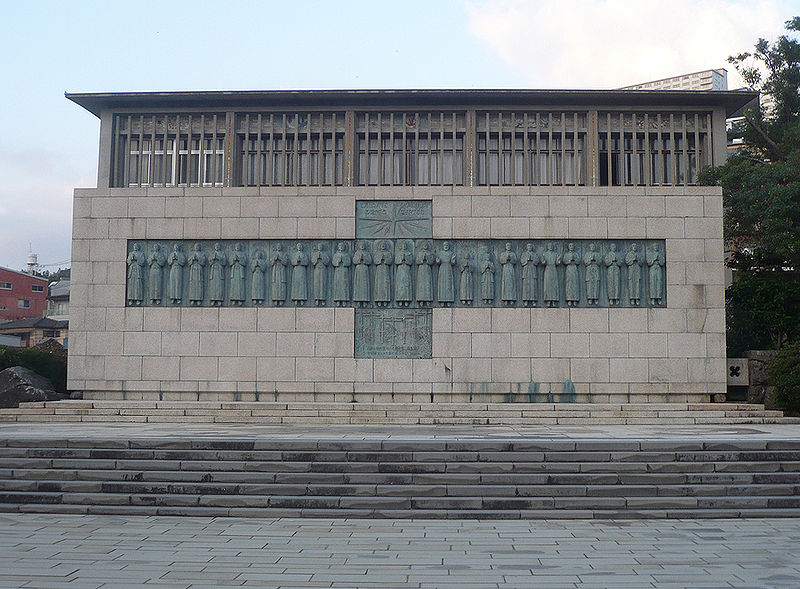
The Catholics held out for some time. However, the Protestant Dutch landed with their heavy cannons and breached the walls. Men, women and children were massacred. The remaining 4,000 Catholics taken prisoner were transported to the rock of Papenburg overlooking Nagasaki harbor. The last survivors of Shimabara were hurled to their deaths from a high cliff.
Underground “Treasure” Discovered – 200 Years Later
The Tokugawa Shogunate fully implemented a policy of isolation that lasted 200 years. Only the Dutch were allowed to maintain a trade mission in the country; all other Europeans were banned. The Jesuit clergy, who would attempt to enter undetected during this time, were all arrested and executed.
What Does Saint Thomas Say About Immigration?
Catholicism in Japan officially went underground for two centuries. In 1867, the Japanese policy officially changed, and religious were allowed back into the country. Priests of the Foreign Mission Society of Paris were the first to arrive and erect a church at Nagasaki. To their great surprise, many Japanese approached asking if they were celibate and venerated the Blessed Virgin.
Upon investigating, the European priests were shocked to find large communities of believers numbering in the thousands. For centuries they had preserved the sacrament of baptism. Every Catholic they questioned knew the catechism and prayers in Japanese and Latin by heart.
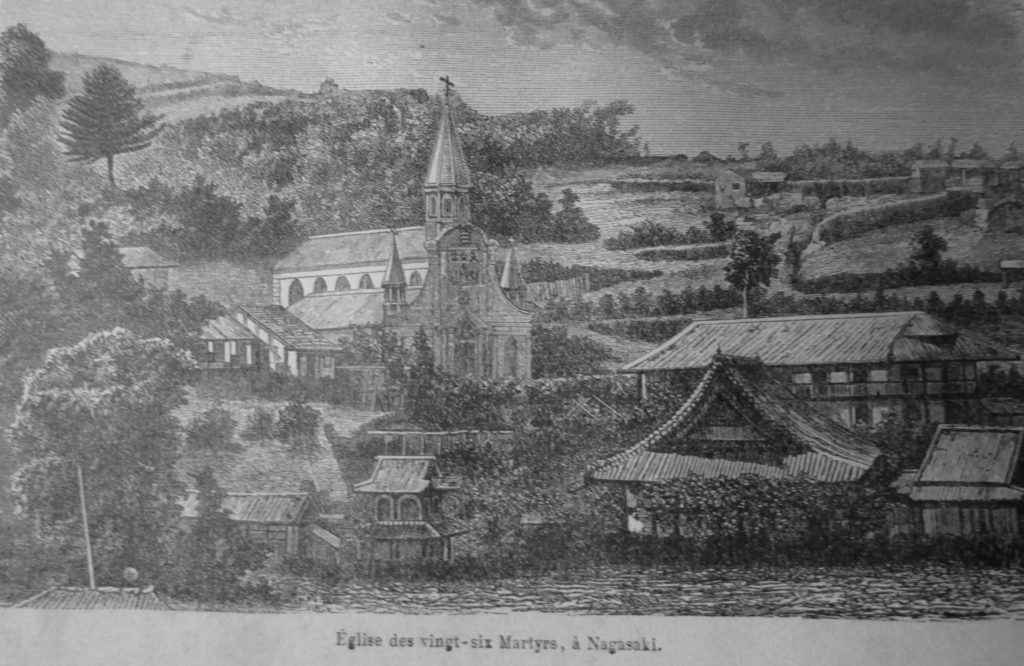
The missionaries soon sent word to Europe of the incredible preservation of the faith in Japan. Catholics deprived of priests for 200 years had faithfully clung to the faith and passed on Church teaching intact. Pope Pius IX, on hearing the report, declared it a miracle.
Future Workings of Grace
From the first baptisms by Saint Francis Xavier in 1549, enemies of the Church have been working to extinguish the Faith in Japan. In spite of brutal persecutions, however, the faith lives on.
Catholics in Japan today make up less than 2% of the population. Through centuries of imposed cultural uniformity, most modern Japanese show little openness to conversion.
God’s ways are not our ways, though. Through the heroic sacrifices of thousands of martyrs, many known only but to God, a glorious future period will certainly come to Japan. Contrasting their centuries of isolation, a Christian civilization will one day take root in Japan, sending out missionaries for the spread of the Gospel.
The Japanese martyrs are now glorifying God forever and stand ready to intercede for us in these dark times. Let us continually beg them for the fortitude needed to be faithful unto the end.



